{ what does the odometer of an automobile measure, odometer, odometer measures, odometer is used to measure, what is odometer, miles, kilometres, distance travelled}
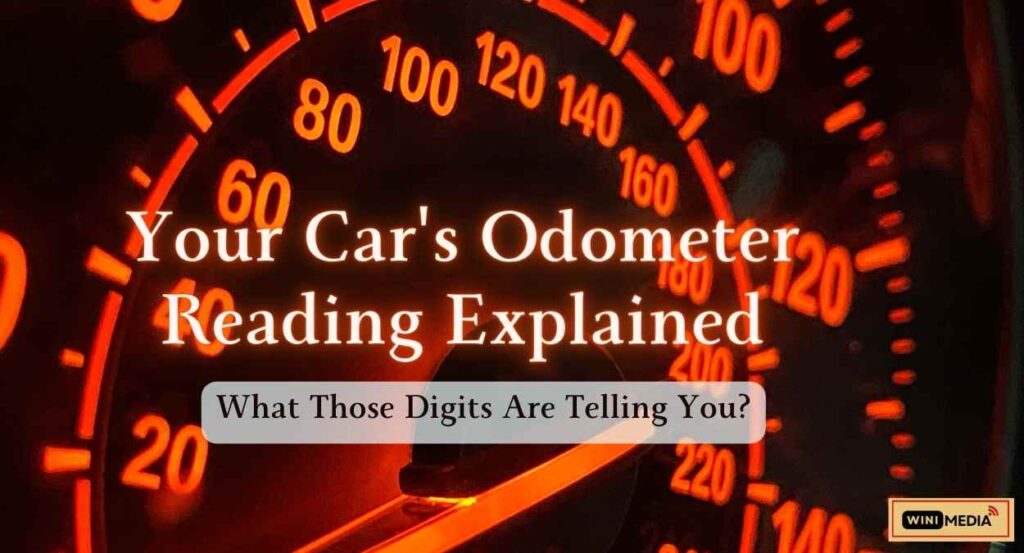
What Your Car’s Odometer Digits Are Telling You
Have you ever wondered what exactly that numbered dial on your vehicle’s dashboard is measuring? That dial is called the odometer, and it has an important job – tracking the total distance your automobile has travelled over its lifetime. Understanding your odometer reading and how to monitor it is essential knowledge for any car owner.
In this comprehensive guide, we’ll explore everything you need to know about automobile odometers. You’ll learn what an odometer is, how it works, why the odometer reading matters, and how to spot odometer tampering. Whether you’re buying a new car or researching a used automobile’s mileage, this article will help you become an expert on odometers.
Let’s start with the basics – defining what exactly an automobile odometer is and its purpose.
What is odometer
An odometer is an instrument that measures and displays the total distance a motor vehicle has been driven. It continuously tallies up the mileage as you drive, providing an accurate record of the “life journey” of your car.
Odometer measures
The key thing an odometer measures is the distance travelled. The farther you drive, the higher the odometer reading will climb. Understanding your odometer helps you track critical maintenance schedules based on mileage, determine your car’s resale value, and avoid odometer fraud when purchasing used vehicles.
Now that you know what an odometer does, let’s look under the hood and learn how this important instrument works.
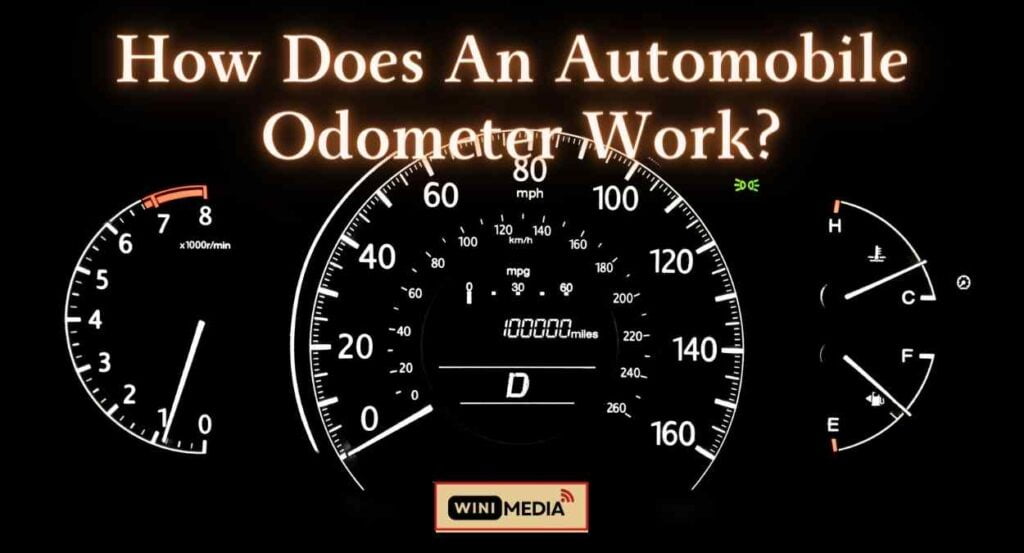
How Does an Automobile Odometer Work?
The odometer is a mechanical or digital device connected to the drive train of a vehicle that counts the revolutions of the wheels to calculate the distance travelled. Here’s a breakdown:
- Mechanical odometers use a series of interconnected gears that spin as the wheels of the car rotate. As the gears spin, they turn numerals on the display panel to incrementally track distance.
- Digital odometers use electronic sensors that send signals proportional to wheel rotation to a digital display. The readout digits increment just like a mechanical odometer.
- Inside the odometer is a permanent magnet that creates magnetic resistance to keep the counting gears turning at the right pace. This resistance ensures the gears turn only when the wheels are rotating to provide an accurate distance measurement.
- Odometers are calibrated to measure standard units like miles or kilometres travelled. The gear mechanisms are finely tuned to spin the exact right amount per mile/km driven.
- Modern odometers typically have an accuracy within +/- 1-2% of miles/km driven. This margin of error is small enough to provide excellent distance tracking.
- Rarely, odometers can experience mechanical failures leading to inaccurate readings. Significantly inaccurate odometers may need repair or replacement.
While most odometers provide reliable mileage data, odometer fraud is unfortunately common, especially with used car sales. Unethical sellers tamper with odometers to artificially lower the mileage and increase resale value. Buyers should be vigilant about this when purchasing used vehicles.
Now that you understand how automobile odometers work “under the hood”, let’s look at what units they measure distance in.
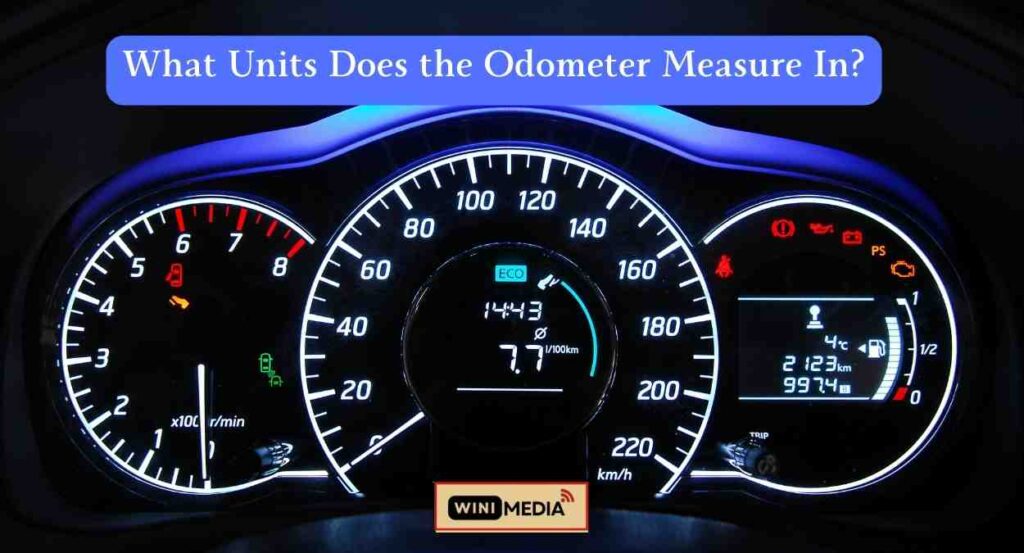
What Does the Odometer of an Automobile Measure: What Units Does the Odometer Measure In?
Automobile odometers around the world display distance travelled in either miles or kilometres:
- In the United States, most odometers are calibrated to measure miles. The total mileage reading indicates the total miles driven.
- In many other countries including Europe and Asia, odometers measure in kilometres rather than miles.
- Some vehicle models sold globally can be configured to display either miles or kilometres based on where the car is registered.
- To convert between miles and kilometres:
- 1 mile = 1.609 kilometers
- 1 kilometer = 0.62 miles
So a car with 100,000 miles on the odometer would be about 160,934 kilometers. And a car with 50,000 kilometres would be around 31,070 miles.
Knowing the proper units is important when tracking maintenance schedules based on mileage, assessing a car’s value, or catching odometer fraud. Most buyers expect used cars to display miles if sold in America, or kilometers if sold abroad.
Now let’s discuss why paying attention to your automobile’s odometer reading is so important:
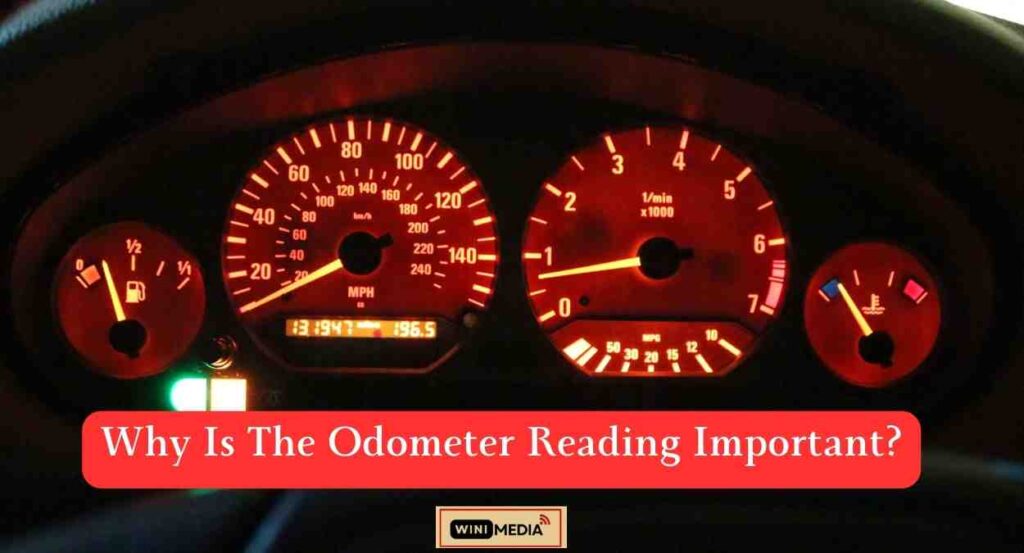
Why is the Odometer Reading Important?
The cumulative odometer reading provides critical data on your automobile’s overall condition and history. Here are some key reasons it matters:
- Tracks total mileage – The odometer gives you the total lifetime distance travelled by the vehicle. This helps you determine the car’s age and expected lifespan.
- Maintenance scheduling – Many maintenance tasks like oil changes are guided by mileage intervals. Monitoring the odometer helps you know when servicing is due.
- Resale value – Mileage is a major factor in determining resale value. More miles generally means a lower value. Tracking mileage helps properly price used cars.
- Odometer fraud – Unethical sellers may alter the odometer to show artificially low miles to increase resale value. This can hide high mileage issues. Buyers should verify odometers.
- Warranties – Some warranties require service within certain mileage limits. The odometer determines if you are still within the mileage terms.
- Insurance – Car insurance rates may depend partly on cumulative mileage. Insurance providers sometimes request odometer checks.
Keeping an eye on your odometer isn’t just about monitoring a number. It provides insight into the true condition and value of your automobile. Next, we’ll look at typical mileage amounts by vehicle age.
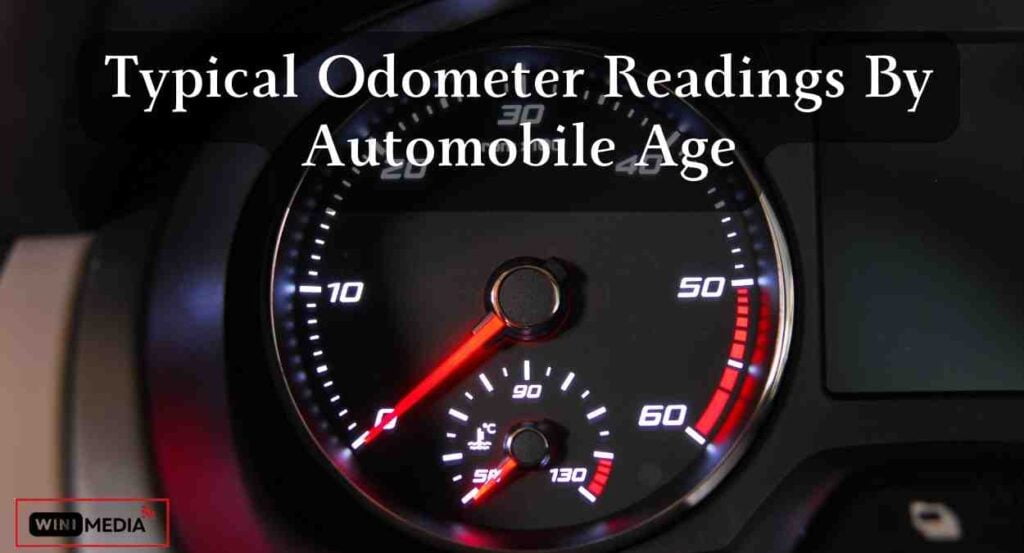
Typical Odometer Readings by Automobile Age
As a car ages, it’s common for the odometer reading to continue climbing upwards. Here are the typical mileage ( Average Annual Milage ) readings you can expect to see at various automobile ages:
| Car Age | Typical Mileage Range |
|---|---|
| 1 year | 10,000 – 15,000 miles |
| 2 years | 20,000 – 30,000 miles |
| 3 years | 30,000 – 50,000 miles |
| 4 years | 40,000 – 70,000 miles |
| 5 years | 50,000 – 90,000 miles |
| 6 years | 60,000 – 110,000 miles |
| 7 years | 70,000 – 130,000 miles |
| 8 years | 80,000 – 150,000 miles |
| 9 years | 90,000 – 170,000 miles |
| 10 years | 100,000 – 190,000 miles |
| 15 years | 150,000+ miles |
- Low mileage is on the lower end of each range
- The average mileage is in the middle
- High mileage is on the higher end
Higher than average accumulations of miles can indicate a vehicle that was driven extensively for business or deliveries. Significantly lower than average mileage may signal the odometer was altered or the car was not driven much.
Use these mileage ranges as a guide when inspecting the odometer of a used car to help determine if the reading seems appropriate for the vehicle’s age. Anomalies could indicate odometer tampering or other issues.
Now let’s look at resetting an odometer or installing a replacement.
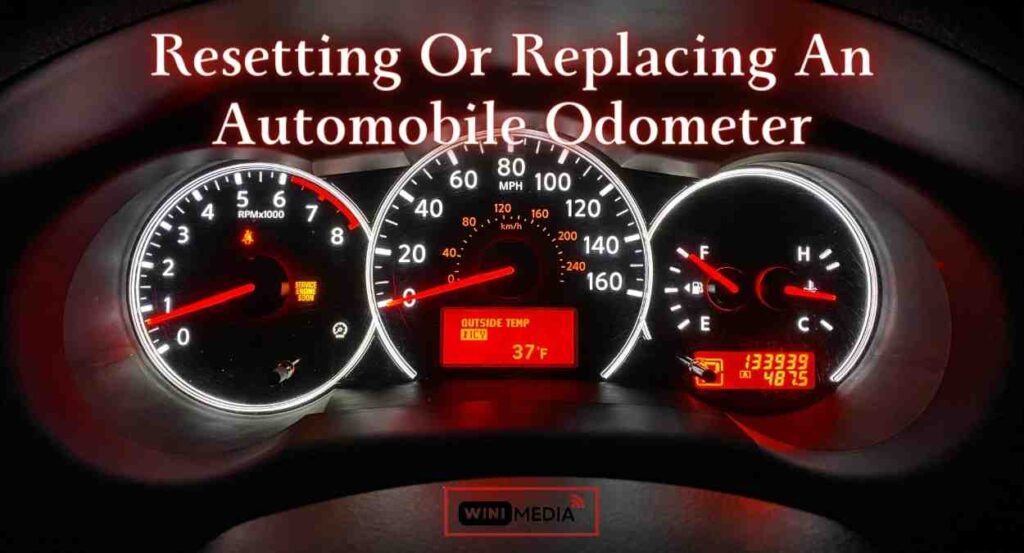
Resetting or Replacing an Automobile Odometer
In some situations, an automobile’s odometer may need to be reset back to zero or replaced with a new unit:
- Reset reasons – Major transmission repairs or replacements may necessitate resetting the odometer to re-establish an accurate mileage count.
- Replacement reasons – Mechanical failure or extreme inaccuracies may require installing a new odometer unit. Digital odometers have largely replaced mechanical ones.
- Legal documentation – Any odometer resets or replacements must be accompanied by thorough paperwork filed with the DMV to avoid accusations of fraud.
- Mechanical odometer resets – In the past, mechanics could manually reset mechanical odometers back to zero. Strict laws now exist to prevent unverified resets.
- Digital odometer resets – Modern digital odometers require specialized electronic tools and software to reset. Only authorized technicians have access to reset them.
Resetting or replacing an odometer should only be done when truly necessary – not to hide high mileage. Responsible automobile owners will keep excellent records to verify any odometer changes.
And that covers the full lifecycle of an automobile odometer! To recap, the odometer is an essential instrument that measures the total miles or kilometres a vehicle has driven over its lifetime. Understanding your odometer helps monitor maintenance, and vehicle value, and avoid fraud. Keep an eye on your odometer reading to keep your car running smoothly for the long haul.
Frequently Asked Questions (FAQs)
Q: How does the odometer calculate the distance travelled by my car?
A: The odometer uses a series of interconnected gears or electronic sensors that precisely track the rotation of the wheels to count miles or kilometres driven.
Q: Should I be concerned if my odometer reading seems too high or low for my car’s age?
A: Significant deviations from normal mileage ranges for a car’s age may indicate issues like odometer tampering or low actual usage. This should be inspected.
Q: What maintenance tasks depend on the odometer reading?
A: Many standard maintenance procedures like oil changes are guided by mileage intervals. Monitoring your odometer helps know when these routine services are due.
Q: Can I reset my car’s odometer?
A: Odometers should only be reset by authorized technicians after major repairs and with proper legal filings. Resetting to hide high mileage is illegal.
Q: How does mileage impact the resale value of my used car?
A: Higher odometer readings generally lower resale value, as buyers associate more miles with more wear. Low odometer readings can increase the value if verifiable.
Q: Should I keep service records connected to my car’s mileage?
A: Yes, keeping service records with odometer readings verifies proper maintenance in line with mileage schedules. This can increase resale value.
Q: Can digital odometers ever show incorrect mileage?
A: Digital odometers are very reliable but in rare cases, electronic failures can cause inaccurate readings that require repair.
Conclusion: What the Odometer Measures and Why It Matters
In this comprehensive guide, we’ve covered everything you need to know about your automobile’s odometer:
- The odometer is an instrument that measures the total distance a vehicle has travelled over its lifetime. This is displayed in miles or kilometres.
- Odometers use interconnected gears or electronic sensors to precisely track miles/km driven as the wheels rotate. Accuracy is typically within 1-2%.
- Monitoring your odometer helps schedule maintenance, determine resale value, and avoid odometer fraud when buying used cars. Mileage is a key indicator of wear and lifespan.
- As vehicles age, it’s common for them to accumulate 10,000-15,000 miles per year driven. Much lower or higher readings could indicate issues.
- Resetting an odometer should only be done when repairs necessitate it. Proper legal documentation must accompany any changes to avoid fraud accusations.
So in summary, your automobile’s odometer provides an essential ongoing record of the total miles or kilometres driven over its lifetime. Keeping an eye on the odometer helps you make smarter maintenance, buying, and selling decisions. Understanding exactly what it measures and why it matters is critical knowledge for every car owner.
Also Read:
The Truth About the Global Vipassana Pagoda’s Mesmerizing Relics






























